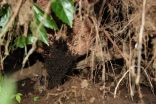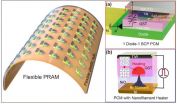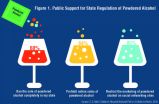INFORMATION:
Underground ants can't take the heat
Climage change models may not look closely enough at microhabitats
2015-06-15
(Press-News.org) PHILADELPHIA (June 15, 2015) - Army ants, the nomadic swarming predators underfoot in the jungle, can take down a colony of prey animals without breaking a sweat. But certain army ant species can't take the heat.
According to a new study from Drexel University, underground species of army ants are much less tolerant of high temperatures than their aboveground relatives--and that difference in thermal tolerance could mean that many climate change models lack a key element of how animal physiology could affect responses to changing environments.
At face value, this is not surprising, noted Sean O'Donnell, PhD, a professor in Drexel's College of Arts and Sciences and senior author of the study published in the Journal of Animal Ecology. Ants that live above ground are exposed to higher temperatures than subterranean ants, so they should be expected to tolerate hotter conditions--but the relationship between microhabitat and heat tolerance simply hadn't been tested before. No one knew whether the subterranean ant species might have been capable of handling high temperatures, even if they prefer cooler ones.
Current models of climate change are built on predictions that animal species may shift their geographic ranges to new latitudes or elevations when the temperature rises. But these models typically use temperature averages taken at a macro resolution--commonly measured 1 meter above ground, and encompassing areas of a square kilometer or more--and they don't generally take into account that different species have varied levels of heat tolerance.
"A few inches of soil can make a big difference in temperature," said Kaitlin Baudier, a doctoral student in O'Donnell's lab and lead author of the study.
To look at whether factors like microhabitat preference--living above ground vs. below ground--affected an animal's thermal range, Baudier, O'Donnell and colleagues looked at nine closely related species of army ants that lived in the same general area in Costa Rica's tropical forests. They sampled ants from each of the species and experimentally tested their maximum heat tolerance in the lab.
They found that the best predictor of heat tolerance was how active the ant species was in above-ground environments. Above-ground army ants were most tolerant of higher temperatures, while species that lived mostly below-ground had much lower tolerance to heat, and species that used a combination of above- and below-ground environments had intermediate levels of tolerance.
Body size and habitat type also interacted, so that in comparisons of same-size individuals from different species, the species that are active above-ground were more heat tolerant--another indicator that habitat use signals the species' tolerance to heat. Within each species, smaller ants were more sensitive to rising temperatures than the larger ants of the same type.
"The takeaway message is that an animal's adaptation to its microhabitat is relevant to its thermal physiology," said Baudier.
"This shows us that the ways these species respond to a changing climate will be different depending on habitat type, and it's important to know that microhabitat could be an indicator of heat tolerance," O'Donnell said.
ELSE PRESS RELEASES FROM THIS DATE:
What fish ears can tell us about sex, surveillance and sustainability
2015-06-15
Scientists at the University of Southampton have found a way to pry into the private lives of fish - by looking in their ears.
By studying ear stones in fish, which act as tiny data recorders, scientists can now reveal migration patterns and even provide insights into their sex life.
Managing fish stocks in a sustainable way is a major challenge facing scientists, conservationists, policy makers and fishermen. To get the best results, accurate information about the movements of fish in the wild is needed but gathering this information is extremely difficult.
Tiny ...
A KAIST research team develops the first flexible phase-change random access memory
2015-06-15
Daejeon, Republic of Korea, Jun 15, 2015 -- Phase change random access memory (PRAM) is one of the strongest candidates for next-generation nonvolatile memory for flexible and wearable electronics. In order to be used as a core memory for flexible devices, the most important issue is reducing high operating current. The effective solution is to decrease cell size in sub-micron region as in commercialized conventional PRAM. However, the scaling to nano-dimension on flexible substrates is extremely difficult due to soft nature and photolithographic limits on plastics, thus ...
Secrets of innovation revealed in study of global video game industry
2015-06-15
From the adventures of Lara Croft in Tomb Raider to the apocalyptic drama of Fallout - new research from the University of Warwick has revealed the secret to how some of the world's most iconic video games were created.
Professor David Stark says it is because the creative teams behind these ground-breaking titles had the ideal mix of career backgrounds and working relationships.
He claims his research offers a fresh insight into the factors which
stimulate innovation - theories that can also apply away from the video gaming industry.
The 'Big Data' analysis looked ...
Self-awareness not unique to mankind
2015-06-15
Humans are unlikely to be the only animal capable of self-awareness, a new study has shown.
Conducted by University of Warwick researchers, the study found that humans and other animals capable of mentally simulating environments require at least a primitive sense of self. The finding suggests that any animal that can simulate environments must have a form of self-awareness.
Often viewed as one of man's defining characteristics, the study strongly suggests that self-awareness is not unique to mankind and is instead likely to be common among animals.
The researchers, ...
Mount Sinai scientists develop new technique for analyzing the epigenetics of bacteria
2015-06-15
Scientists from the Icahn School of Medicine at Mount Sinai have developed a new technique to more precisely analyze bacterial populations, to reveal epigenetic mechanisms that can drive virulence. The new methods hold the promise of a potent new tool to offset the growing challenge of antibiotic resistance by bacterial pathogens. The research was published today in the journal Nature Communications, and conducted in collaboration with New York University Langone Medical Center and Brigham and Women's Hospital of Harvard Medical School.
The information content of the ...
How the Epstein-Barr virus hides in human cells
2015-06-15
Scientists at Helmholtz Zentrum München have now discovered how Epstein-Barr virus (EBV) conceals itself in human cells. A main culprit for its bad visibility by the immune system is the viral protein LMP2A. As published in the scientific journal PLOS Pathogens, the protein helps EBV-infected cells hide from T cells. This camouflage through the LMP2A protein may play a major role in the causation of cancer by EBV.
„We suspected that a viral protein was behind EBV's camouflage in cancerous cells", says Dr. Andreas Moosmann from the Research Unit Gene Vectors ...
Majority of adults favor ban on powdered alcohol
2015-06-15
ANN ARBOR, Mich. -- After this year's legalization of powdered alcohol, some states have already banned it -- a move that the majority of the public supports, according to a new University of Michigan C.S. Mott Children's Hospital National Poll on Children's Health.
Adults across the country share the same top concern about the new alcohol-on-the-go product: potential misuse among underage youth.
Packaged in travel-friendly pouches, powdered alcohol will be available in flavors of distilled spirits like vodka and rum and also mixed drinks. One packet of powdered alcohol ...
Uterine transplantation: Subjects have 'adjusted well to their new life situation'
2015-06-15
Lisbon, 15 June 2015: In October last year the Gothenburg, Sweden, group of Mats Bra?nnstro?m announced the world's first live birth following the transplantation of a donated uterus.(1) In an editorial accompanying the report, The Lancet listed this remarkable achievement as comparable to only three other landmarks in the history of reproductive medicine: "the arrival of in-vitro fertilisation (IVF) in the late 1970s; the development of intracytoplasmic sperm injection (ICSI) in the early 1990s; the first ovarian transplant a decade ago; and [now] the first live birth ...
Assisted reproduction not associated with reduced academic performance in adolescence
2015-06-15
Lisbon, 15 June 2015: The academic performance of children conceived by assisted reproduction techniques (ART) is no better or worse than that of spontaneously conceived children when assessed at the ninth grade of their school education.(1) Similarly, ART singletons and ART twins also had comparable test scores, suggesting, say the investigators, that "the higher obstetric risk" identified in ART pregnancies - and particularly in twins - "is not associated with poorer academic performance in adolescence".(2)
"These findings are very important for infertile patients," ...
Poor sleep associated with increased risk of heart attack and stroke
2015-06-15
EuroHeartCare is the official annual meeting of the Council on Cardiovascular Nursing and Allied Professions (CCNAP) of the European Society of Cardiology (ESC). The 2015 meeting is held 14 to 15 June in Dubrovnik, Croatia, in collaboration with the Croatian Association of Cardiology Nurses.
Professor Gafarov said: "Mortality from cardiovascular diseases accounts for nearly 50% of the total mortality among the population. Nearly 80% of deaths from cardiovascular disease are due to myocardial infarction (heart attack) and stroke. It means that today we are talking about ...
LAST 30 PRESS RELEASES:
Injectable breast ‘implant’ offers alternative to traditional surgeries
Neuroscientists devise formulas to measure multilingualism
New prostate cancer trial seeks to reduce toxicity without sacrificing efficacy
Geometry shapes life
A CRISPR screen reveals many previously unrecognized genes required for brain development and a new neurodevelopmental disorder
Hot flush treatment has anti-breast cancer activity, study finds
Securing AI systems against growing cybersecurity threats
Longest observation of an active solar region
Why nail-biting, procrastination and other self-sabotaging behaviors are rooted in survival instincts
Regional variations in mechanical properties of porcine leptomeninges
Artificial empathy in therapy and healthcare: advancements in interpersonal interaction technologies
Why some brains switch gears more efficiently than others
UVA’s Jundong Li wins ICDM’S 2025 Tao Li Award for data mining, machine learning
UVA’s low-power, high-performance computer power player Mircea Stan earns National Academy of Inventors fellowship
Not playing by the rules: USU researcher explores filamentous algae dynamics in rivers
Do our body clocks influence our risk of dementia?
Anthropologists offer new evidence of bipedalism in long-debated fossil discovery
Safer receipt paper from wood
Dosage-sensitive genes suggest no whole-genome duplications in ancestral angiosperm
First ancient human herpesvirus genomes document their deep history with humans
Why Some Bacteria Survive Antibiotics and How to Stop Them - New study reveals that bacteria can survive antibiotic treatment through two fundamentally different “shutdown modes”
UCLA study links scar healing to dangerous placenta condition
CHANGE-seq-BE finds off-target changes in the genome from base editors
The Journal of Nuclear Medicine Ahead-of-Print Tip Sheet: January 2, 2026
Delayed or absent first dose of measles, mumps, and rubella vaccination
Trends in US preterm birth rates by household income and race and ethnicity
Study identifies potential biomarker linked to progression and brain inflammation in multiple sclerosis
Many mothers in Norway do not show up for postnatal check-ups
Researchers want to find out why quick clay is so unstable
Superradiant spins show teamwork at the quantum scale
[Press-News.org] Underground ants can't take the heatClimage change models may not look closely enough at microhabitats


